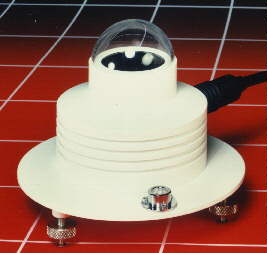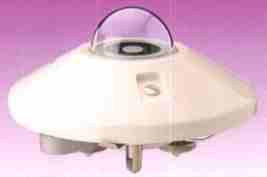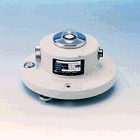
INTERCOMPARISON OF
UVB BROADBAND DEVICES

 |
INTERCOMPARISON OFUVB BROADBAND DEVICES |
 |
General Information - Campaign - Participants at LAP - Others
35 broadband instruments were involved in this intercomparison as well as 2 Brewers, a Bentham DTM300 and a ... for determining spectral and angular responses of the broadband instruments inside the laboratory.
The broadband devices were of the types SolarLight Model 501, YES, SciTech, Vital, EKO and MO MSU.



The devices were sent from Austria, Canada, Czech Republic, Finland,
Germany, Greece, Italy, Netherlands, Poland,
Portugal, Russia, Spain, Sweden and Switzerland to participate in this
campaign.
1. Laboratory characterization of the instruments (angular and spectral response) and
2. Outdoor intercomparison
The braodband instruments were mounted on the roof of LAP and measuring over a period of 7 days.
For the outdoor intercomparison spectral measurements were also done
using the Bentham DTM300. The DTM300 was
equiped with the input optic J1002 (Schreder Company) for global spectral
measurements. A special input optics developed
at the IMP Innsbruckand was mounted parallel for spectral measurements
of the direct component and sky scans. The global
spectral measurements were done every 20 minutes and were weighted
to the spectral responses of the broadbandmeters.
Two Spectrophotometers of type Brewer took also part, measuring global radiation during the campaign.
| Alkis Bais, Stelios Kazadzis, Chrysanthi Topaloglou | LAP, Aristotle University of Thessaloniki, Greece | Solar Light 501, ................... |
| Mario Blumthaler, Josef Schreder, Michael Schwarzmann | Institute of Medical Physics, University of Innsbruck, Austria | 2 Solar Light 501, SciTec, Eppley |
| Alois W. Schmalwieser | Institute of Medical Physics and Biostatistics, University of Veterinary Medicine, Vienna, Austria | 2 Solar Light 501 |
| Michal Janouch | Solar and Ozone Observatory Hradec Kralove, CHMI, Czech Rep. | 2 Solar Light 501 |
| Alexander Curylo | Centre of Aeorology, Institute of Meteorology and Water Management, Legionowo, Poland | 2 Solar Light 501 |
| Diamantino Henriques | Instituto de Meteorologia, Lisbon, Portugal | 1 Solar Light 501 |
| Nataly Chubarova | Meteorological Observatory, Moscow State University, Russia | MO MSU, Y.E.S.UVB-1 |
| Bruce McArthur, AES, Canada | SL501, Y.E.S.UVB-1, SciTec CUV3 |
| Tapani Koskela, Finnish Meteorological Institute, Helsinki, Finnland | Solar Light 501 |
| Kristi Leszczynski, STUK, Finnland | Solar Light 501 |
| Klaus Dehne, DWD, Germany | Solar Light 501, SciTec UV-S-AE-T |
| Martin Müller, Fraunhofer Institut für Atmosphärische Umweltforschung, Germany | Solar Light 501 |
| Daniele Grifoni, C.N.R.-I.A.T.A., Firenze, Italy | Vital BW-100, EKO MS210D |
| Henk Reinen, RIVM, The Netherlands | Solar Light 501 |
| E. Cuevas, INM, Madrid, Spain | 2 x Y.E.S.UVB-1 |
| Josefsson, SMHI, Sweden | Solar Light 501 |
| Ulf Weser, Sweden | Solar Light 501 |
| Alain Heimo, Swiss Meteorologcal Institute, Payerne, Switzerland | Solar Light 501 |
| Greece | Y.E.S.UVB-1 |
!!!more will be coming up!!!
This campaign was also sponsored by WMO.
And special thanks to Alkis Bais, Stelios Kazadzis and Chrysanthi Topaloglou for the perfect organisation and the pleasing stay of the participants.
Comments to this page to: A.W.Schmalwieser, Sept.1999